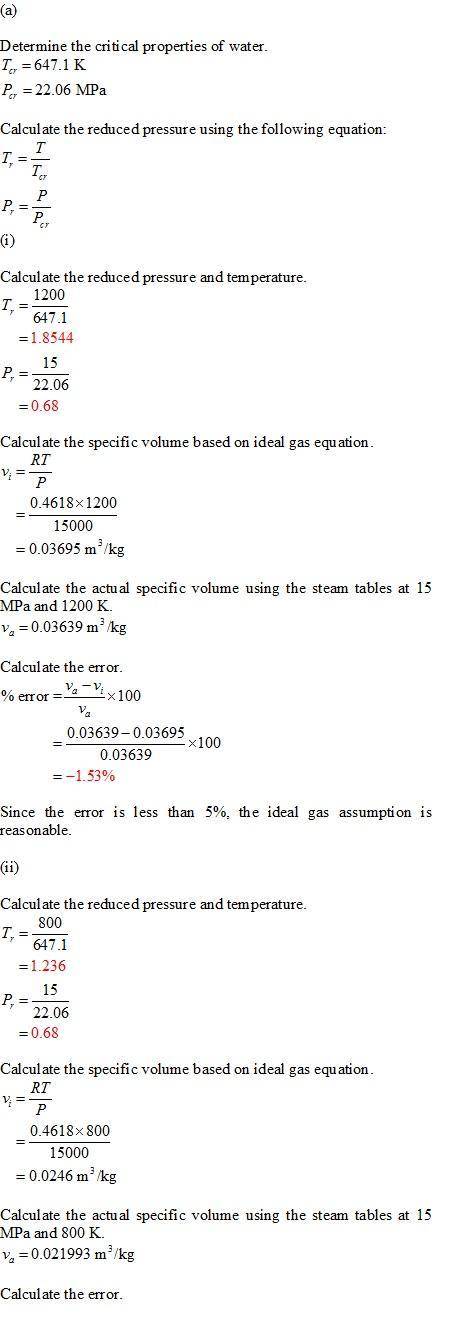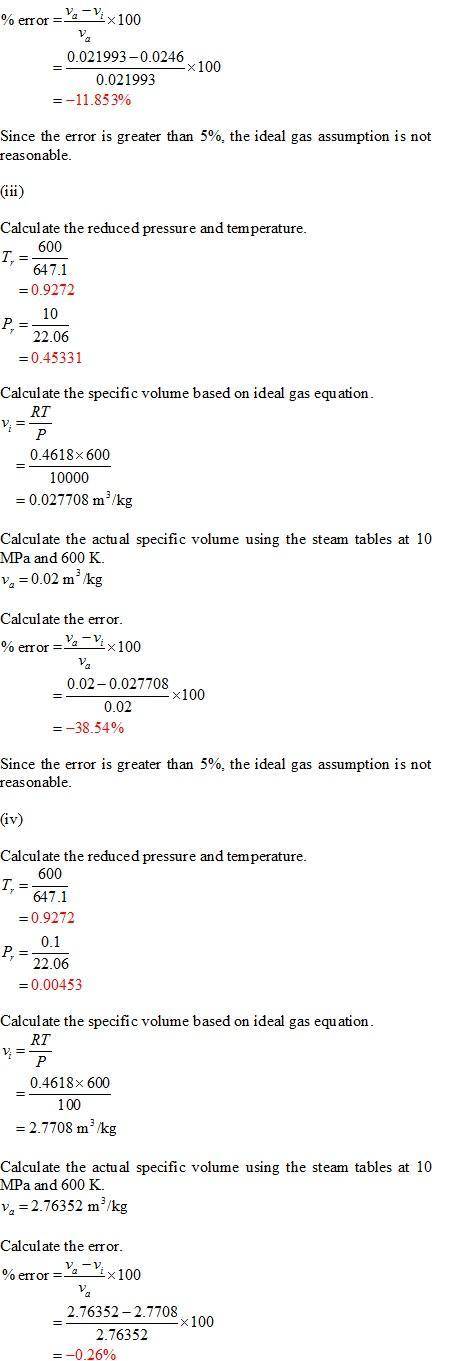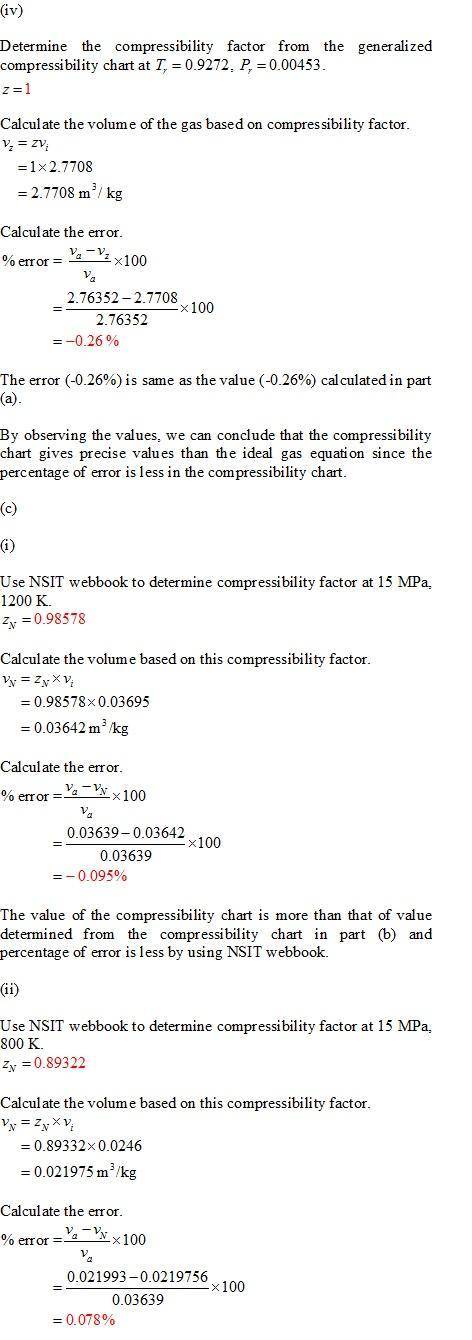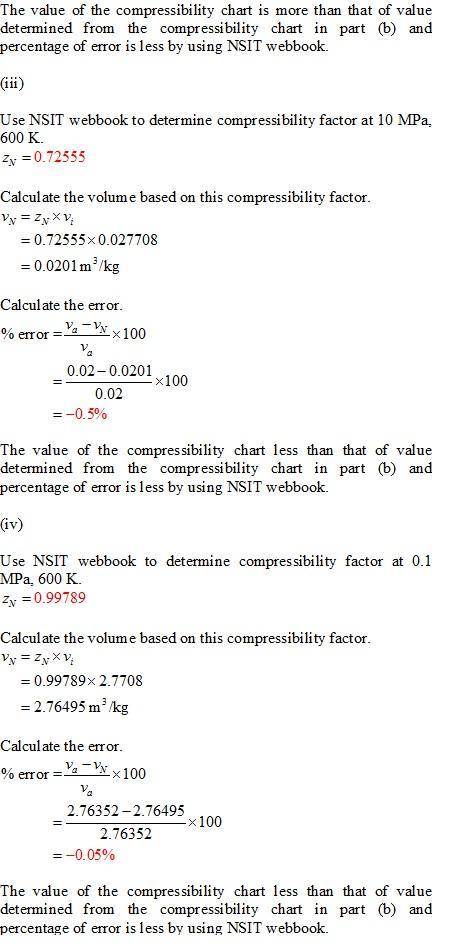
Engineering, 27.02.2020 18:42 tangia
The substance is steam (H2O). NOTE: The purpose of this problem is to illustrate that there are conditions where water vapor is far from ideal-gas behavior. For this reason, in this course, we will always use tables or NIST to determine properties of H2O for all conditions to avoid misuse of the ideal-gas EOS.
a. For the four conditions below, calculate the reduced pressure and the reduced temperature.
HINT: See Appendix E. Based on these values, decide if ideal-gas behavior is reasonable, i. e., that Pv = RiT within +/- 5%.
i. P = 15 MPa T = 1200 K
ii. P = 15 MPa T = 800 K
iii. P = 10 MPa T = 600 K
iv. P = 0.10 MPa T = 600 K
b. Use the generalized compressibility chart (Fig. 2.18 p. 92) to estimate a value of the compressibility factor Z for these conditions. How do these values compare with your thinking in part 1?
c. Use the NIST webbook to determine the compressibility factor Z for steam at the conditions above. How "ideal" is steam at these various conditions? How do these Z-values compare with your estimates from part 2?

Answers: 3
Another question on Engineering

Engineering, 04.07.2019 18:10
The temperature of air decreases as it is compressed by an adiabatic compressor. a)- true b)- false
Answers: 2

Engineering, 04.07.2019 18:10
Apump is used to circulate hot water in a home heating system. water enters the well-insulated pump operating at steady state at a rate of 0.42 gal/min. the inlet pressure and temperature are 14.7 lbf/in.2, and 180°f, respectively; at the exit the pressure is 60 lbf/in.2 the pump requires 1/15 hp of power input. water can be modeled as an incompressible substance with constant density of 60.58 lb/ft3 and constant specific heat of 1 btu/lb or. neglecting kinetic and potential energy effects, determine the temperature change, in °r, as the water flows through the pump.
Answers: 1

Engineering, 04.07.2019 18:10
For the closed feedwater heater below, feedwater enters state 3 at a pressure of 2000 psia and temperature of 420 °f at a rate of ix10 ibhr. the feedwat extracted steam enters state 1 at a pressure of 1000 psia and enthalpy of 1500 btu/lbm. the extracted er leaves at an enthalpy of 528.7 btu/lbm steam leaves as a saturated liquid. (16) a) determine the mass flow rate of the extraction steam used to heat the feedwater (10) b) determine the terminal temperature difference of the closed feedwater heater
Answers: 3

Engineering, 04.07.2019 18:10
Condition monitoring is a major component of. (clo4) a)- predictive maintenance. b)-preventive maintenance c)-proactive maintenance d)-reactive maintenance.
Answers: 1
You know the right answer?
The substance is steam (H2O). NOTE: The purpose of this problem is to illustrate that there are cond...
Questions




Physics, 18.03.2021 21:00

Mathematics, 18.03.2021 21:00

Social Studies, 18.03.2021 21:00

Mathematics, 18.03.2021 21:00

Social Studies, 18.03.2021 21:00


Social Studies, 18.03.2021 21:00

Biology, 18.03.2021 21:00




English, 18.03.2021 21:00


Mathematics, 18.03.2021 21:00


Mathematics, 18.03.2021 21:00








